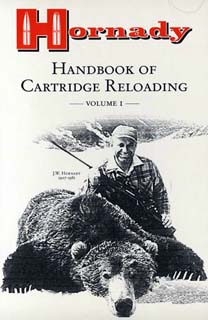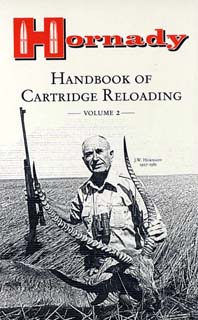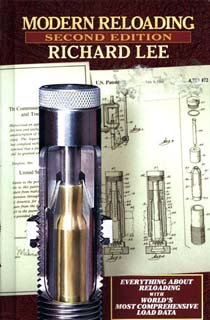|
Nosler
Reloading Guide #5
Nosler
Bullet Company has released its new Reloading Guide. They
call it a ‘Guide’ but it is really a 728 page reloading
book. It is their
fifth edition. And this one has loading data for the new Ultra
Remington cartridges and the Winchester new offerings as well. Including the hard to find data on the new .270 WSM.
Naturally 99% of the other cartridges we would be interested in
are there also. With
74 rifle cartridges, fifteen handgun/rifle rounds (like the T/C
Contender loads) and 16 true handgun rounds.
These are reloading listings for Nosler bullets.
One
of the neat things about the new book is their listings of
Ackley Improved cartridges also.
The 22-250, 257 Roberts, 280 Remington, 30-06, are all
data rich in the Improved versions also.
I checked my references and the Improved drawings of
these cartridges are indeed Ackley’s original designs. I
wanted the improved 6mm Remington and the improved 35 Whelen...
but sadly they are missing.
But the Dakota cartridges and loadings are listed, and
the 45-70 loadings for strong guns. Just as they do for the 45
Colt listings. I
was also happy to see real data for the 8mm-06, a great
cartridge that is used well in this country, but rarely listed
in reloading books.
A
real plus is you can do neat comparisons.
When you compare the listings for the 280 Remington
Ackley Imp to the 7mm Remington Magnum (the belted round) you
will be surprised how close the velocities are... but with the
280 Imp using 10 grains or so less powder than the Big Mag
round. (And my 280
Imp on a Ruger long action, does even better.)
The 280 Imp giving equal or in some cases better
ballistics than Remington’s new 7mm Short Action Ultra Magnum,
and very close to the Remington belted 7mm magnum.
Which means as far as bullet drop goes all three are
ballistic triplets. Set
the point of impact with the Nosler 7mm 160 grain CI Gold
Partition at 2900 to 3000 fps from any of these three, at 3
inches high at 100 yards, and the 400 yard drop is 9 inches!
I
collect reloading books... past and present, and when I am
loading a new round I feel I really need to check more than one
reference manual. Also
as the Nosler book shows, it is listing its data with Nosler
bullets. If you use another brand of bullets and their data, the
prudent thing is to drop the max loads at least 5%.
The bullet’s bearing length, hardness of the jacket,
hardness of the internal lead, whether it is bonded together,
and more can have a significant influence on pressure.
That is another reason listed velocities for the same
weight bullet and the same powder charge, sometimes vary
considerably from reloading manual to reloading manual.
Also the type of firearm used to collect the data, the
kind of brass, primer, etc..... So this new reloading manual by Nosler is very good,
especially if you use their very fine bullets.
  
Hornady Handbook of Cartridge Reloading Volumes 1 and 2
Hornady
put out a two book set on reloading called the Hornady Handbook
of Cartridge Reloading Volumes 1 and 2.
The neat thing about this offering is not just the first
volume, which is 854 pages of data for reloading.... but the
second book, volume 2. It
is the most comprehensive work I’ve have seen short of
computer programs, for ballistic tables with over 1030 pages. Giving bullet drop, in yards and meters.... one section
giving drop figures for 1000 yards for the match shooters, the
regular drop tables going to 500 yards, with 6 zero points for
each velocity listed. From the 17 calibers to the 45 calibers.
The 1000 yard listings give those for 22 cal, .243, 6.5
(.264), 7mm, 30 caliber, and the 50 caliber... showing the 750
grain 50 cal/machine gun bullet at a B.C. of 1.050!
A full 24 pages of 1000 yard listings.
Handgun
ballistic tables go from 25 caliber to .475.
For over 150 pages.
Then it is done again in meters... and the wind drift
pages run for 64 pages. If you can’t find the ballistic data you want in this Tome
of a book... You
are shooting something nether Hornady or I ever heard of.
Volume
one is of course the actual reloading book.
With 132 listings for rifle and handguns.
Well known rounds all the way to some data on cartridges
not found very often... and with extensive listings. Like the
9mm Kurtz or 357/44 Bain&Davis... or the 357 and 44 magnums
from rifles, the 458 Lott, 50 BMG, 7.7 Japanese, the new Ultra
mags, all three Russians... the 7.62 x 39, x 54mm and 53 rimmed
mm, the new 20 caliber as well as the 17s, and many, many
others. And of
course like all of the past Hornady Manuals they show the best
powders they found for the cartridges and bullets listed, not
just one brand like some references....
When
I called a national distributor for Winchester rifles, I asked
about the new .243 WSSM Black Shadow rifle.
I was told Winchester wouldn’t ship them until some
time in January 04. They
were trying to keep up with the .224 WSSM demand. But Hornady
has 8 listings with 16 different bullets for the new .243 WSSM.
So the next time you are looking for a good reloading manual...
take a look at this set.
  
Modern
Reloading, Second Edition by Richard Lee
Richard
Lee’s second reloading manual is on the market.
And like the first one it is unique, and with over 100
new listings. Called
Modern Reloading, second edition...
By Richard Lee. Mr.
Lee is the retired owner of the Lee Reloading Company.
I believe his son Michael now runs the company.
Richard Lee knows what he is talking about.
His reloading manuals give the reloader something that is
rare in reloading books. He
gives the pressures of each listing... for example on page 353
under the listings for the 7-08, shows the 139 grain bullet over
50 grains of H4350 at 2906 fps giving 55,721 psi.
And on page 359 under the listings for the 7X57 with the
same 139 grain bullet, 51.8 grains of ReL 19 gives 2835 fps and
49,000 psi.
Some
of the listings give pressure readings in copper units of
pressure (cup) not pounds per square inch (psi).
Usually if you have a CUP pressure reading over 40,000 or
so, and want the psi of the cup listing, add 10,000 to it.
Now copper units of pressure and pounds per square inch,
are not linear. And the 10,000 figure is just a number to give a person an
idea of psi. It can
in many cases be very far off, so don’t use it as a rule for
reloading. At 719 pages Lee’s book is fairly extensive.. From
the 17 Bee to 50 BMG, rifles and handgun loads....and an extra
12 chapters of valuable information, like Brinell testing your
own bullets, burning rate charts for powder, new signs for
pressure reading and much more. And as I said the pressure
material alone, is worth the price of admission.
Happy New Year,
Paco
  
Got something to say about this article? Want to agree (or
disagree) with it? Click the following link to go to the GUNBlast Feedback Page.
All content © 2003 GunBlast.com.
All rights reserved. |
|

Nosler Reloading Guide #5


Hornady Handbook of Cartridge Reloading Volumes 1 and 2

Modern Reloading, Second Edition by Richard Lee
|
![]()